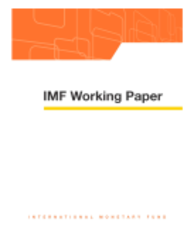
Stock Markets and the Real Exchange Rate : An Intertemporal Approach
The paper presents an N-country model with stock markets, in which a closed-form solution for the real exchange rate is derived. Risky asset prices and allocation of risky assets among countries are determined endogenously. Such a framework allows an analysis of how fundamental parameters, such as the variance and covariance of the risky assets or demographic variables, affect the real exchange rate. The predictions of the model are contrasted with the Balassa-Samuelson effect. A new transmission channel of the real exchange rate for parameters such as income on net foreign assets, risk aversion, and risk-hedging opportunities is also explored.
Publication date: May 2003
ISBN: 9781451853230
$15.00
Add to Cart by clicking price of the language and format you'd like to purchase
Available Languages and Formats
| English |
Prices in red indicate formats that are not yet available but are forthcoming.
Topics covered in this book
This title contains information about the following subjects.
Click on a subject if you would like to see other titles with the same subjects.
Finance , Finance , Money and Monetary Policy , Money and Monetary Policy , Real exchange rate , risky assets , Balassa-Samuelson effect , exchange rate , hedging , International Finance: General , Open Economy Macroeconomics
Also of interest
Summary
Copyright © 2010 - 2025
Powered by:
AIDC



